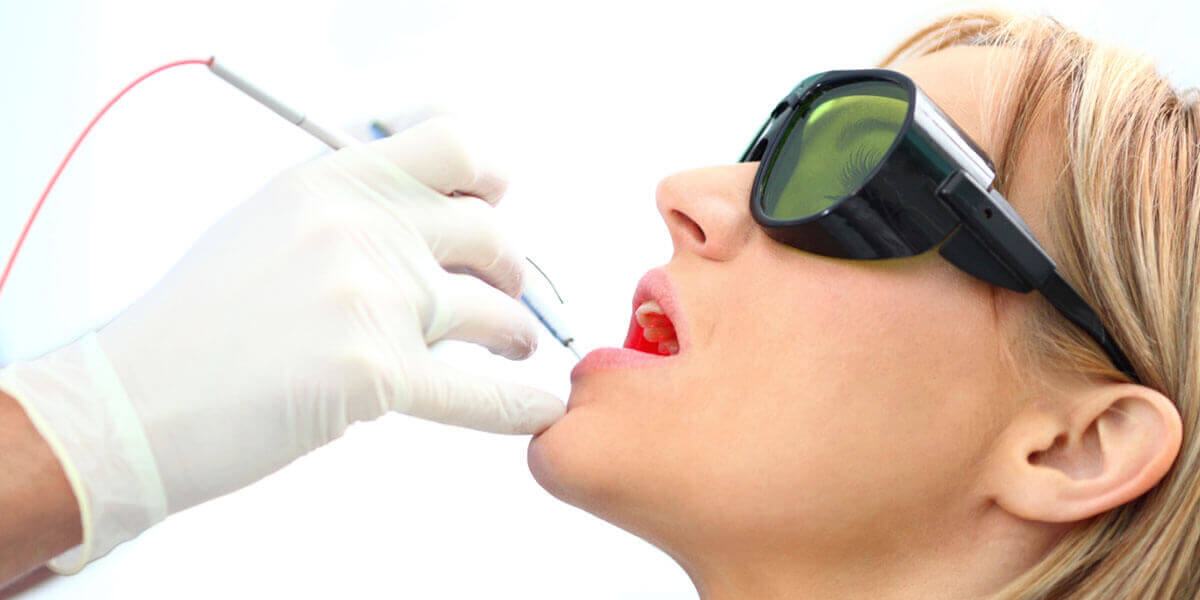Lasers in Dentistry - Minimally Invasive Procedures

Dental lasers are a medical technology that emits a beam of concentrated light. When used for surgical and periodontal procedures, the laser acts as a cutting instrument. The procedures performed with dental lasers are minimally invasive and preferable to conventional surgery.
Lasers in dentistry allow for many procedures to be performed with no noise, minimal pain, less bleeding, faster recovery times, and fewer appointments.
Some additional benefits lasers have over traditional methods include:
- Reduced heat and vibration
- Little or no need for anesthetic
- Minimal bleeding
- Faster treatment time
- Increased rate of retention of implants
- Reduced damage to healthy tissues
- Minimal post-operative swelling and discomfort
- Fewer infections or post-operative complications
Lasers have numerous functions in dentistry including:
- Place dental implants
- Reshape gum tissue
- Biopsy or remove soft tissue lesions and ulcers
- Remove areas of tooth decay
- Increase rate of retention of implants
- Eliminate infection in gum tissue pockets
- Fuse tissues
- Perform frenectomies (such as correction of ankyloglossia)
- Perform oral surgery and extractions
Treating Aphthous Ulcers with Laser Dentistry
Using laser dentistry, we can also treat aphthous ulcers with minimal pain and a faster recovery time. Lasers work by delivering energy in the form of light.
